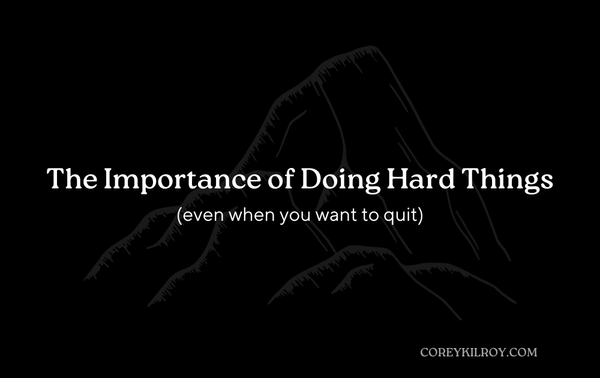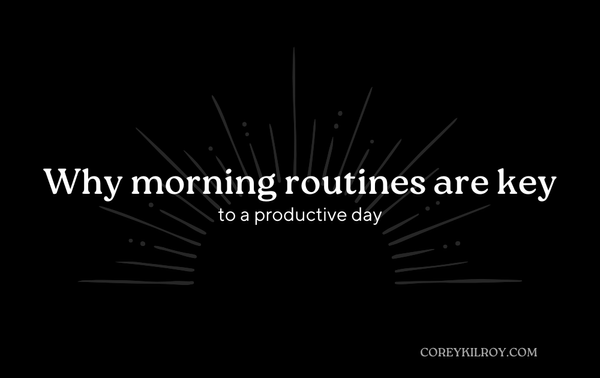EWG 2024 Dirty Dozen & Clean Fifteen Lists

I’ve always preached the habit of shopping around the perimeter of the store when grocery shopping.
When doing this, you’re more likely to encounter real, whole foods compared to the processed stuff plaguing the inner aisles.
However, when we dive deeper into the kinds of foods we’re consuming, the quality of the produce becomes a new question at hand.
Among nutrition experts, scientists, and the public, there’s much debate as to whether organic foods are safer than conventionally grown foods.
One such discussion surrounds the presence of pesticide residue on organic vs. non-organic produce.
Lucky for us, to provide consumers with more information, the Environmental Working Group (EWG), an independent non-profit organization, recently released its Shopper's Guide to Pesticides in Produce, including the 2024 Dirty Dozen and Clean Fifteen lists.
These lists show which non-organic fruits and vegetables have the most and the least amount of pesticide residue.
The EWG found that 75% of non-organic produce has pesticide and fungicide residue even after scrubbing, washing, or peeling. However, a nutritionist Healthnews spoke with says consumers should not base nutritional decisions on EWG's fear-based messaging.
Nonetheless, the lists are the result of the non-profit group's analysis of the latest fruit and vegetable testing data from the U.S. Department of Agriculture (USDA) and the U.S. Food and Drug Administration (FDA).
The analysis included data from 47,510 samples of 46 fruits and vegetables!
Here’s the breakdown:
Fungicides
Four of the five pesticides found most frequently on the Dirty Dozen are fungicides: fludioxonil, pyraclostrobin, boscalid, and pyrimethanil.
Fungicides are applied on fruits and vegetables to prevent or kill fungal diseases like powdery mildew. They’re often applied after harvest to keep produce mold-free on its way to market.
That’s likely why fungicide concentrations can be so high on some produce, due to being higher than other pesticides applied earlier in the growing season.
Although the potential human health harms of fungicides aren’t as well studied as other pesticides, emerging evidence suggests many widely used fungicides may disrupt the hormone system.
Here are a few direct quotes on EWG’s analysis of the potential risks of these four fungicides:
- Studies of fludioxonil have found it can act like estrogen, increasing the proliferation of breast cancer cells. It also has the potential to harm the male reproductive system. Fludioxonil is found on 90 percent of peaches and nearly 30 percent of Dirty Dozen samples.
- Pyrimethanil has been linked to thyroid disruption and might block androgen receptors in the body. Pyrimethanil was the most frequently detected pesticide on pears, showing up on 54 percent of samples.
- Some studies have suggested that pyraclostrobin could be associated with liver toxicity and metabolic disorders. Pyraclostrobin was found on 10 percent or more of each Dirty Dozen item and about half of the strawberry and cherry samples.
- In animal studies, boscalid has been linked to cancer and thyroid dysfunction, and it may also disrupt hormones. Boscalid was found on almost half of blueberry samples, and just over 50 percent of cherries and strawberries.
EWG’s 2024 Dirty Dozen
According to their analysis of 46 different different fruits and vegetables, EWG determined that 12 of them were most contaminated with pesticides:
1. Strawberries
2. Spinach
3. Kale, collard, and mustard greens
4. Grapes
5. Peaches
6. Pears
7. Nectarines
8. Apples
9. Bell and hot peppers
10. Cherries
11. Blueberries
12. Green beans
Here are some notable highlights of the Dirty Dozen:
- A total of 209 pesticides were found on Dirty Dozen items.
- Over 90 percent of samples of strawberries, apples, cherries, spinach, nectarines, and grapes tested positive for residues of two or more pesticides.
- More than 50 pesticides were detected on samples from each item on the Dirty Dozen, except cherries.
- The most pesticides were found on kale, collard, and mustard greens, with 103 individual chemicals found across the items in the category.
- The neurotoxic organophosphate insecticide acephate, prohibited from use on green beans in 2011, was detected in six percent of that crop’s samples.
Why do some produce have more pesticide residue anyway?
Possible reasons might include specific growing practices, the timing of pesticide application, or the season when a crop grows.
And fungicides may be found in higher concentrations because they are frequently applied post-harvest, or closer to the time that crops make it to store shelves.
EWG’s 2024 Clean Fifteen
These 15 types of produce had the lowest amounts of pesticide residues, according to EWG’s analysis:
- Avocados
- Sweet corn
- Pineapple
- Onions
- Papaya
- Sweet peas (frozen)
- Asparagus
- Honeydew melon
- Kiwi
- Cabbage
- Watermelon
- Mushrooms
- Mangoes
- Sweet potatoes
- Carrots
Here are some notable highlights of the Clean Fifteen:
- Almost 65 percent of Clean Fifteen fruit and vegetable samples had no detectable pesticide residues.
- Avocados and sweet corn were the cleanest produce – less than 2 percent of samples of each showed any detectable pesticides.
Analysis
First and foremost, the development of these lists should definitely not deter you from consuming one fruit or vegetable over another, or produce all together.
At the end of the day, you’re always better off eating conventional produce compared to the junk food filled with preservatives and seed oils.
These lists merely serve as data and knowledge to keep in the back of your mind for the next time you’re out shopping for groceries and when you’re at home cooking.
The products on the Dirty Dozen can most assuredly be consumed, but next time, just pay a little closer attention to how you’re washing your produce before consumption.
Hell, I’ve even seen a white powdery layer on my bell peppers when prepping my food for the week, but a little produce-cleaning solution and water do the trick for me.
You can find many different kinds of produce cleaning solutions online or in-store, so don’t fret.
You can even create your own solution at home by simply combining 1 part vinegar with 1 part water and spraying that onto the produce and/or letting it soak for a few minutes before rinsing it off.
Now additionally, some scientists say that washing produce doesn’t wash away all of the pesticides from your food.
According to Alexa Friedman, Ph.D., she says,
“Even after these steps, the agencies' tests still found traces of 254 pesticides in all fruits and vegetables tested – and 209 of these were on Dirty Dozen produce. Because all produce has been thoroughly cleaned before analysis, washing a fruit or vegetable would not change its ranking in EWG's Shopper's Guide.”
Despite this though, I still believe it’s much better than nothing.
After all, much more research is needed to be done about pesticides and organic vs conventional produce anyway.
In the end…
EWG does an excellent job at researching and analyzing the quality of the produce we’re consuming (hopefully) on a daily basis.
By providing consumers, like us, with lists like the Dirty Dozen and Clean Fifteen, we can proactively manage the quality of the produce we buy and eat.
Knowledge is power.
Be well and Keep Pluggin, C.



